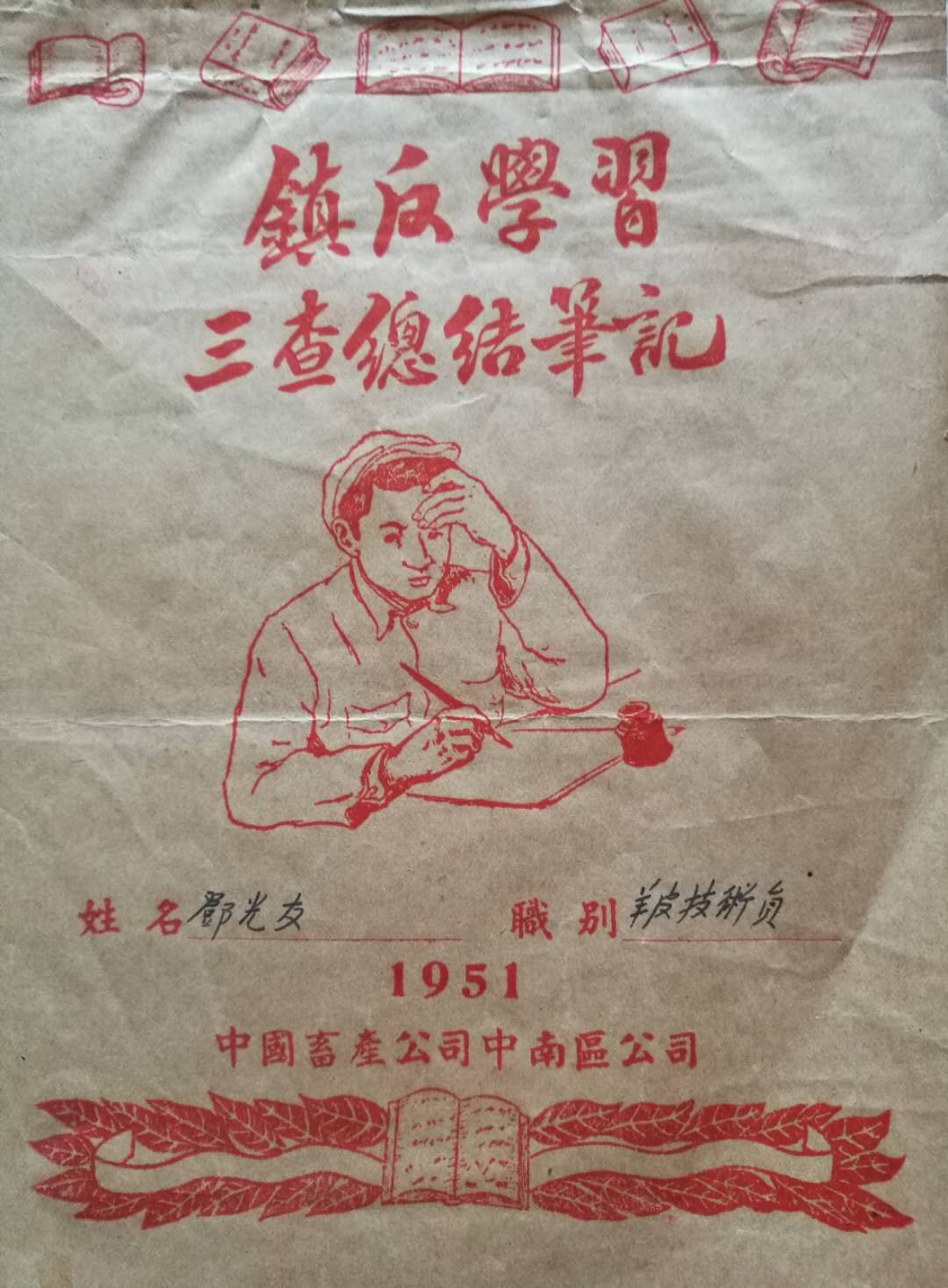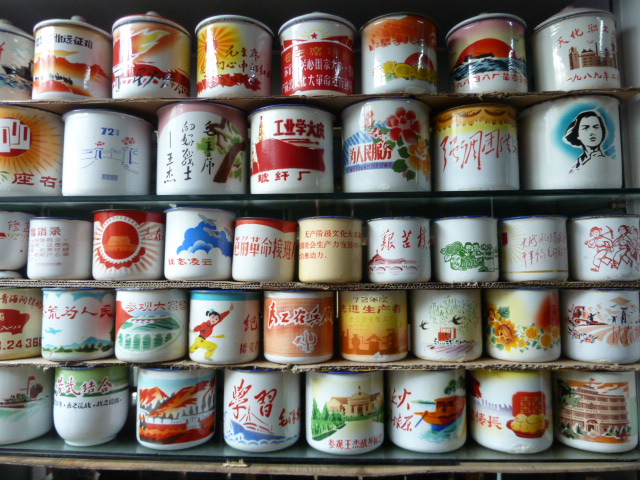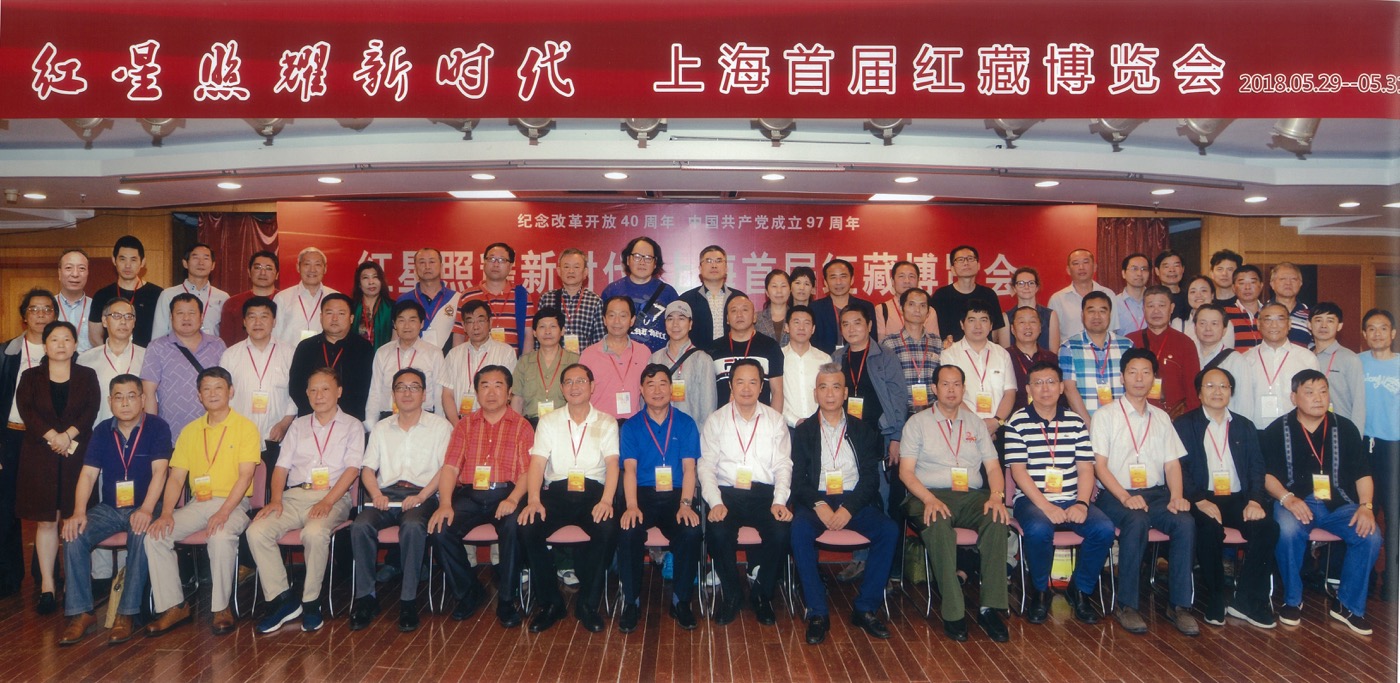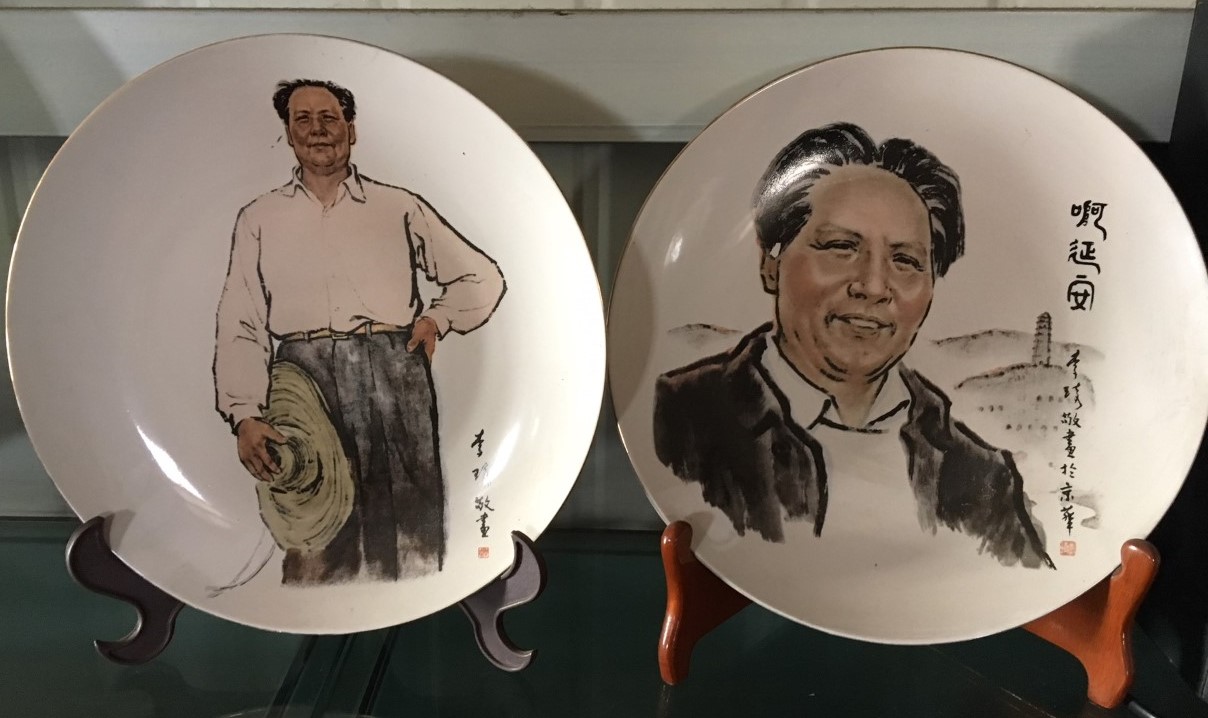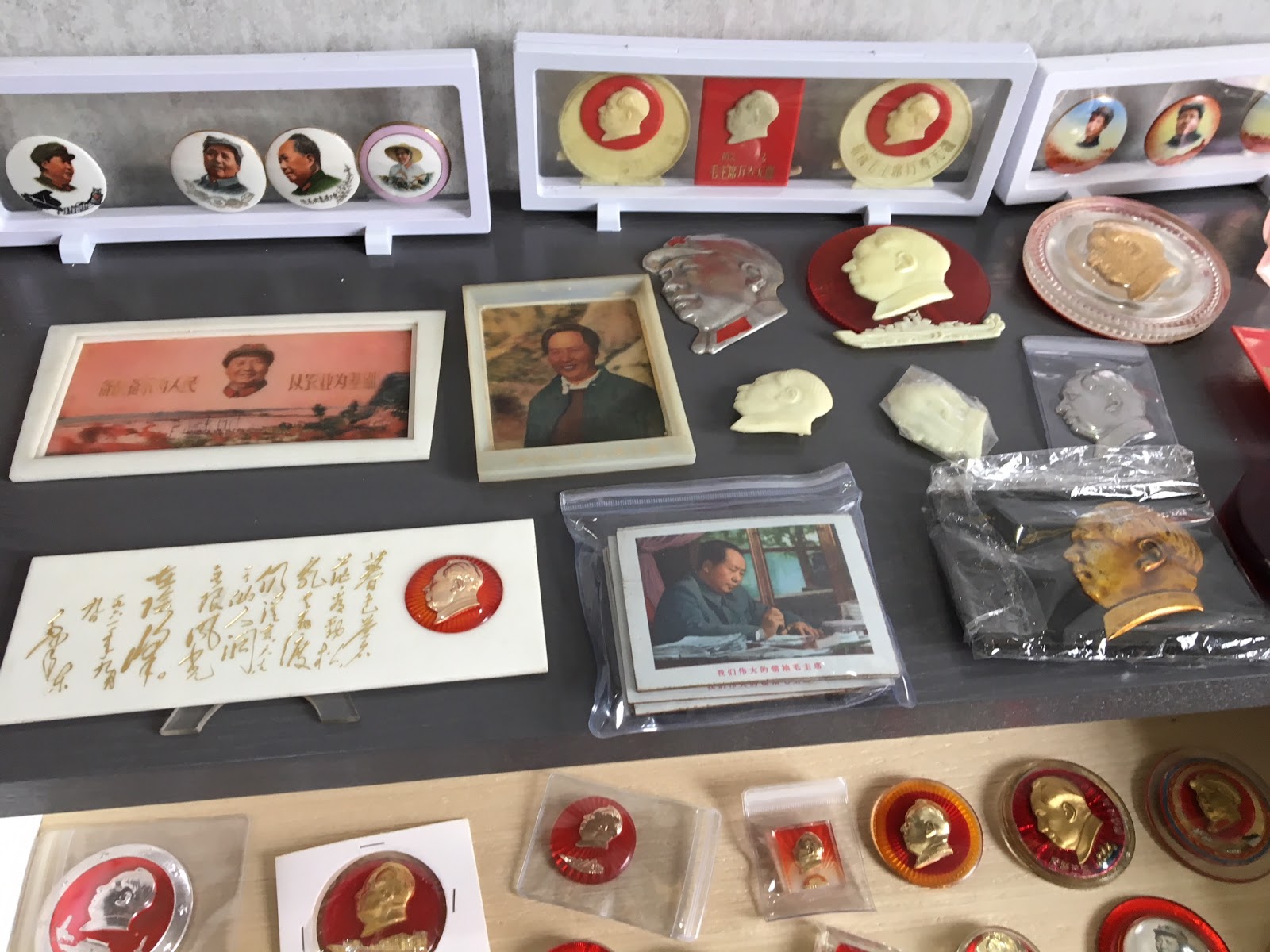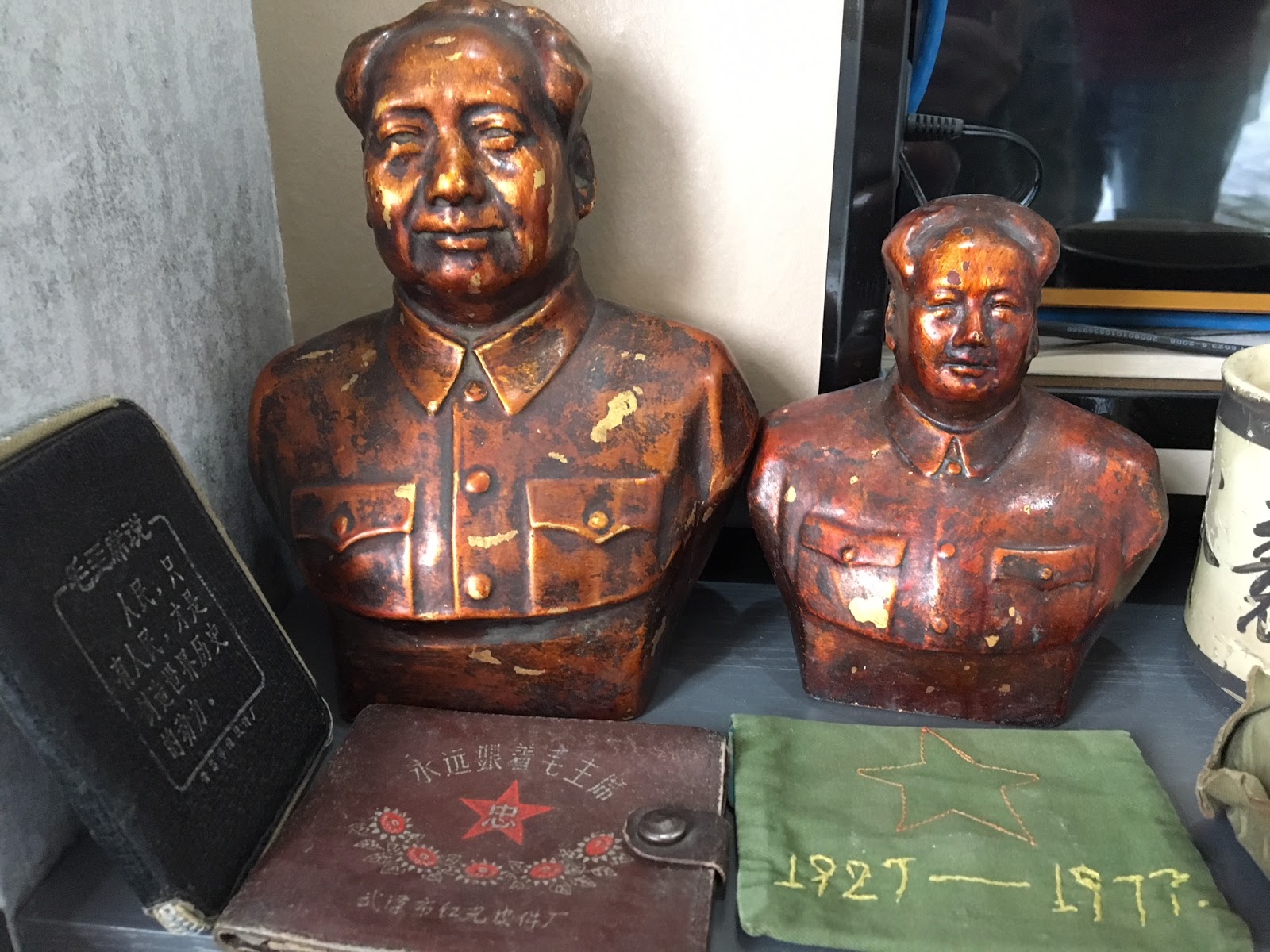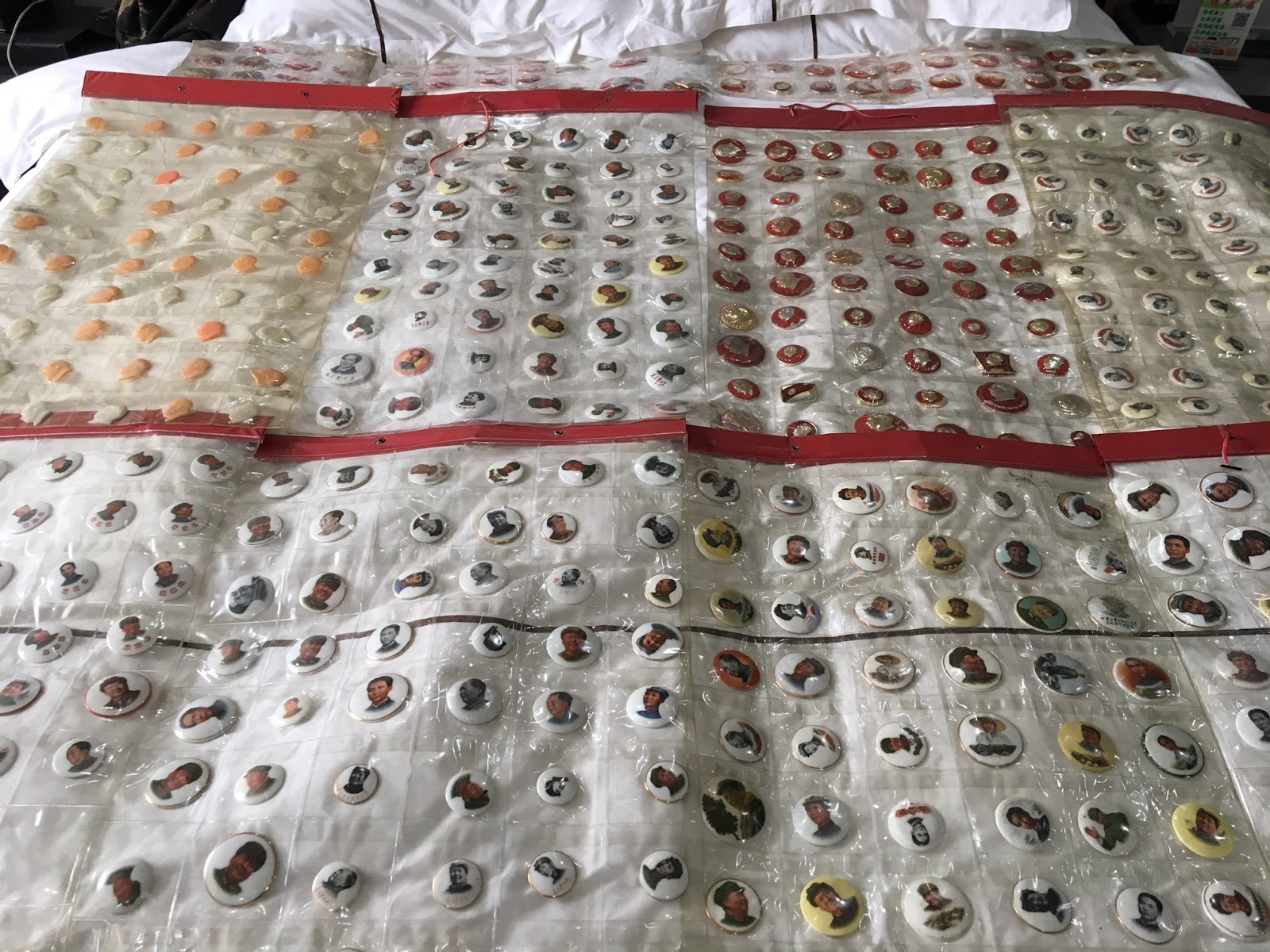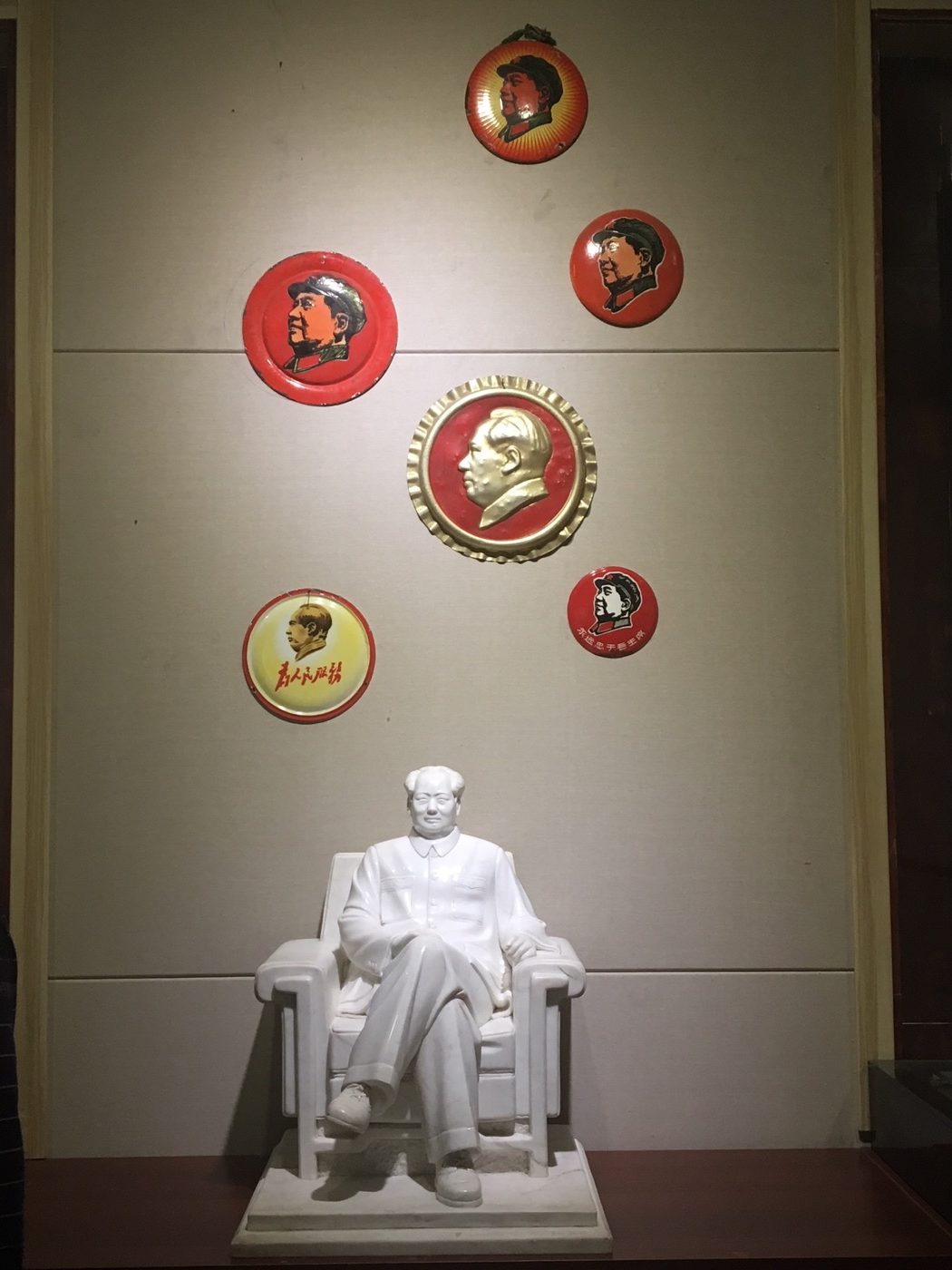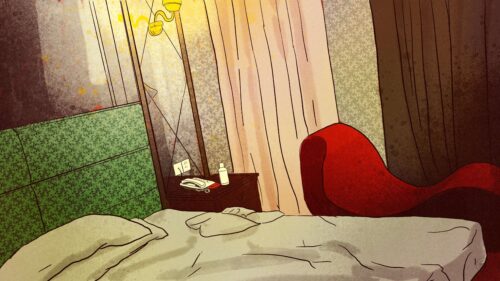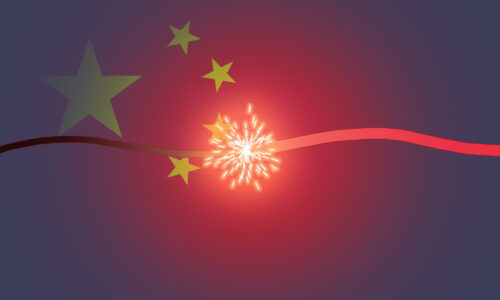China’s Red Collectors
Meet the Chinese collectors preserving memories from the Mao era — and the country's erstwhile revolutionary spirit — through posters, badges, notebooks, clothing, stamps, photographs, periodicals, everyday items…and everything in between.
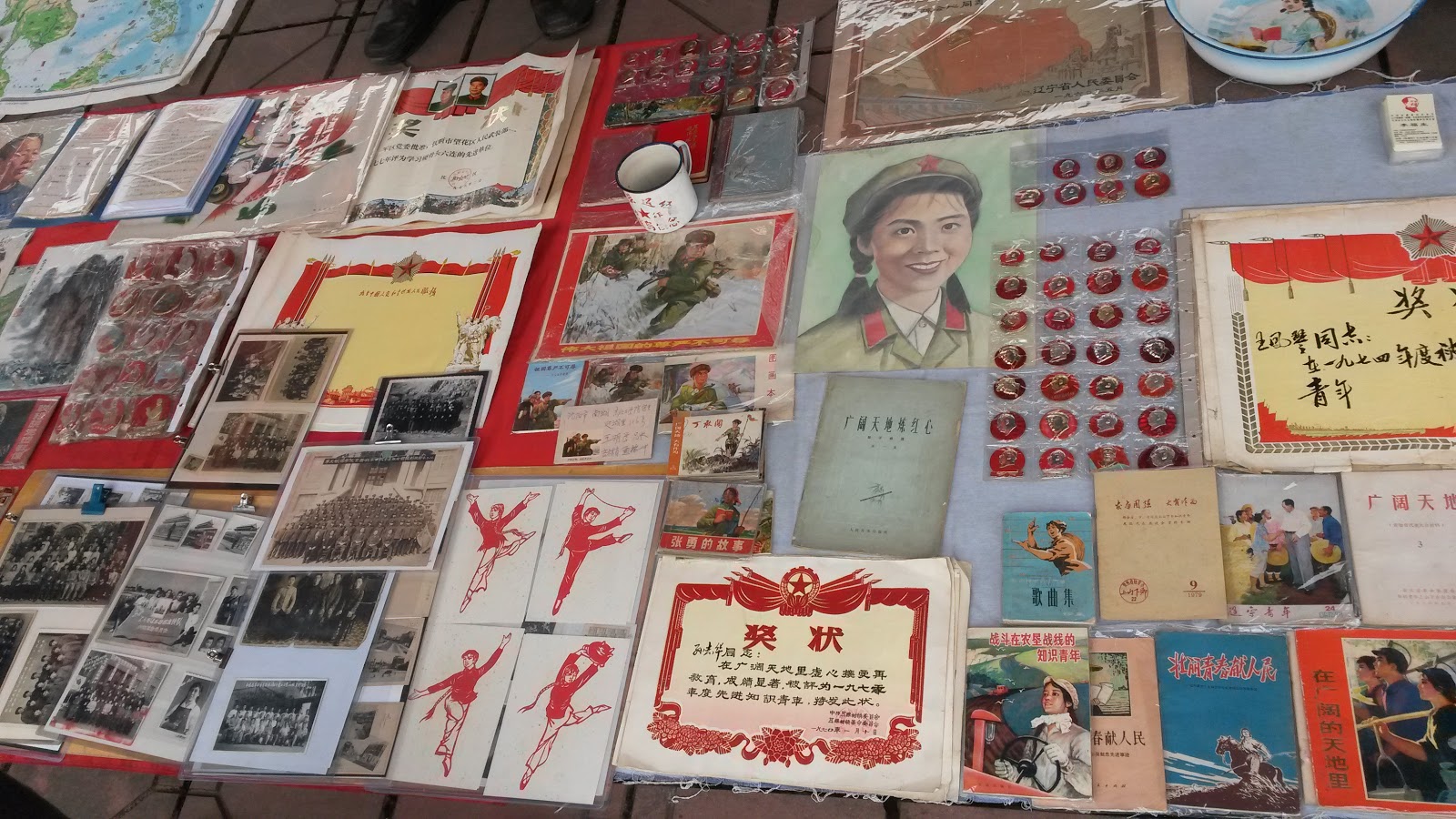
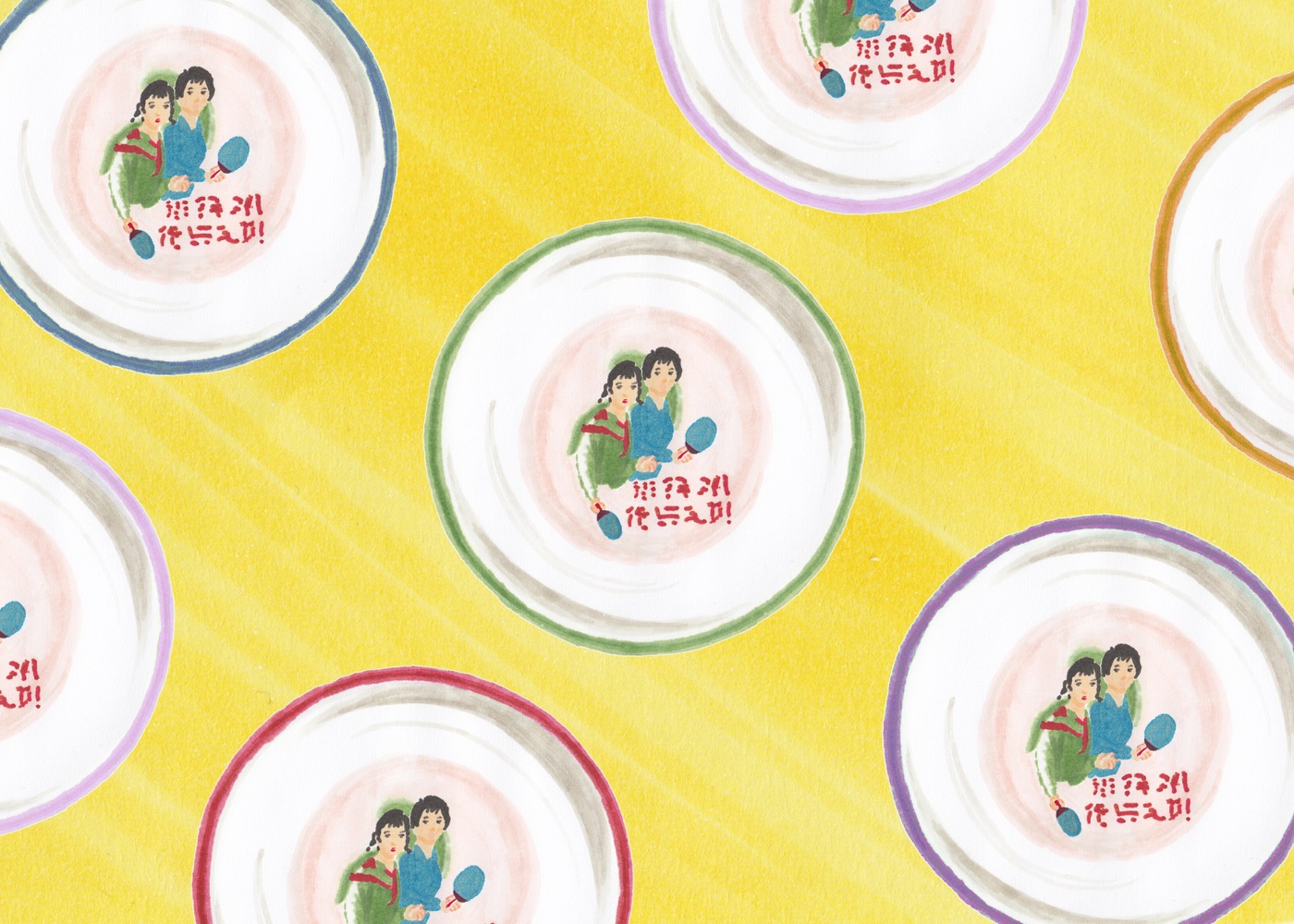
Chairman Mao Zedong remains ever visible in contemporary China. He is printed on money, his image overlooks Tiananmen Square, and keepsakes from his era (or reproductions, anyway), such as Little Red Books and badges, are hawked at flea markets and tourist sites.
But for some people, these objects aren’t just tokens of a bygone time, used to extract cash from naïve tourists; they constitute the center of a subculture dedicated to collecting, exhibiting, and spreading China’s “red history.”
Xiao Li 小李, a middle-aged woman from Bengbu, Anhui Province, is one of the hundreds of people who flocked to Shanghai last month to attend the first annual Shanghai Red Collectors Conference 上海首届红藏博览会, organized by the Chinese Red Research Association Red Collectors Professionals’ Committee 中国红色文化研究会红色收藏专业委员会, which was set up in December 2017. Xiao Li and her husband are professional “red relic” (红色文物 hóngsè wénwù) sellers, two of hundreds of individuals who travel around the country attending “red” events and selling their wares.
In Shanghai, sellers set up miniature stores in their hotel rooms while collectors wandered from room to room, browsing art, propaganda, clothing, books and documents, and daily life items, all from the so-called “red era” (normally defined as 1921-1976).
When I enter Xiao Li’s “store,” she and her husband are relaxing on the bed, looking at their phones. A spare bed and much of their floor space is occupied by propaganda posters, mostly from the Mao era, but there are also some related to the family planning policy of the 1980s. Small toys, sculptures, and enamel mugs and plates line the edge of the walls and the windowsill. One table is given over to dozens of Mao badges.
I’ve become something of a familiar face at these events, having attended several them over the last year or so as a researcher, and so Xiao Li pulls up a chair for me and hands me a bottle of water. Business has gone well, she says. In addition to making a good number of sales, she also recently acquired a thick stack of posters for a good price.
As a cultural historian of modern China, I’m interested in the legacy of the Mao era in the contemporary period. We often break history into concrete periods, focusing on the shifts that followed watershed moments: the end of the Qing dynasty, the establishment of the PRC, reform and opening. I’m instead more interested in the continuities that flow between them, both ideologically and materially, and the memories that tie these periods together.
For the past year, I’ve traveled around China interviewing “red” collectors and attending their events. In a China that seems to have, in so many ways, left the Mao era behind, I’m fascinated by the people trying to preserve its material culture, and with it, the moral and political spirit that they see as being lost.
Xiao Li has been in the field for more than a decade, and has seen how it has changed: every year the number of interested buyers goes up while the available supply goes down, with a predictable effect on prices. There has been a concurrent rise in fakes, and like many collectors and sellers, Xiao Li relies mostly on her experience and gut feeling to distinguish between authentic and counterfeit.
“A year spent actually in the field, seeing and touching objects, will teach you how to evaluate reals from fakes better than three years of reading books,” she tells me. “There are things you can look for: the red color they used on badges at the time is hard to reproduce now, but a lot of it comes down to your feeling. The objects made during the Cultural Revolution came from people’s hearts; nowadays people can make good quality fakes, but they can’t fake the emotion attached to the original objects.”
I stroll from room to room, taking in the wide variety of items on sale. Some sellers have a broad selection on display, while others are more targeted. A seller from Guangdong has enamel plates and mugs stacked on one bed, and booklets on the other, many of which were early Cultural Revolution denunciations of Liu Shaoqi 刘少奇 and Deng Xiaoping 邓小平. People’s Liberation Army overcoats hang on the wall and Mao badges cover all other surfaces. He tells me that these objects are valuable mostly as commemorative pieces, and that he likes them because of their shared aesthetic. Reform and opening brought some advantages, he says, but its stuff lacks the visual cohesion of that from the Mao era. That’s why he sticks to the “Maoist stuff.”
In another room, a seller from northeast China hawks Mao badges from one bed while a seller from Jiangxi Province sells posters and documents on the other side of the room. Like many sellers, both of these men are also collectors, and the badge salesman pulls a box out from under the bed to show me some of his treasured personal possessions.
“If people studied Mao’s works today, China wouldn’t have the problems that it does,” he tells me — a common sentiment within this community. He also says he collects for fun.
These days, there are very few objects from the Mao era which aren’t the focus of someone’s collection: Mao badges, propaganda posters, and stamps were the earliest collectables to take off, but there’s also a market for alcohol bottles (full or empty), university graduation certificates, decorative mirrors, and pretty much anything else you can think of.
The Jiangxi salesman’s surname is Lin 林, and along with his collection of Mao images are objects that depict disgraced former defense minister Lin Biao 林彪. A third man from Taiyuan, Shaanxi, who collects old cigarette packages, sits in the room. He tells me cigarette packages are one of the four big print collectibles, alongside stamps, liquor labels, and matchboxes. The coloring of his teeth and edges of his fingertips hints at why he chose cigarettes amongst the four.
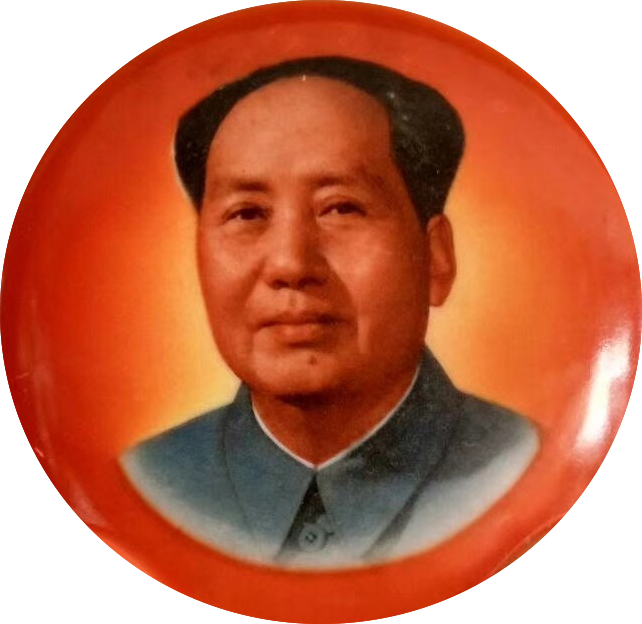
Collecting Mao badges became so popular during the Cultural Revolution that the government decided to stamp out badge markets for fear that they would encourage capitalistic thinking.
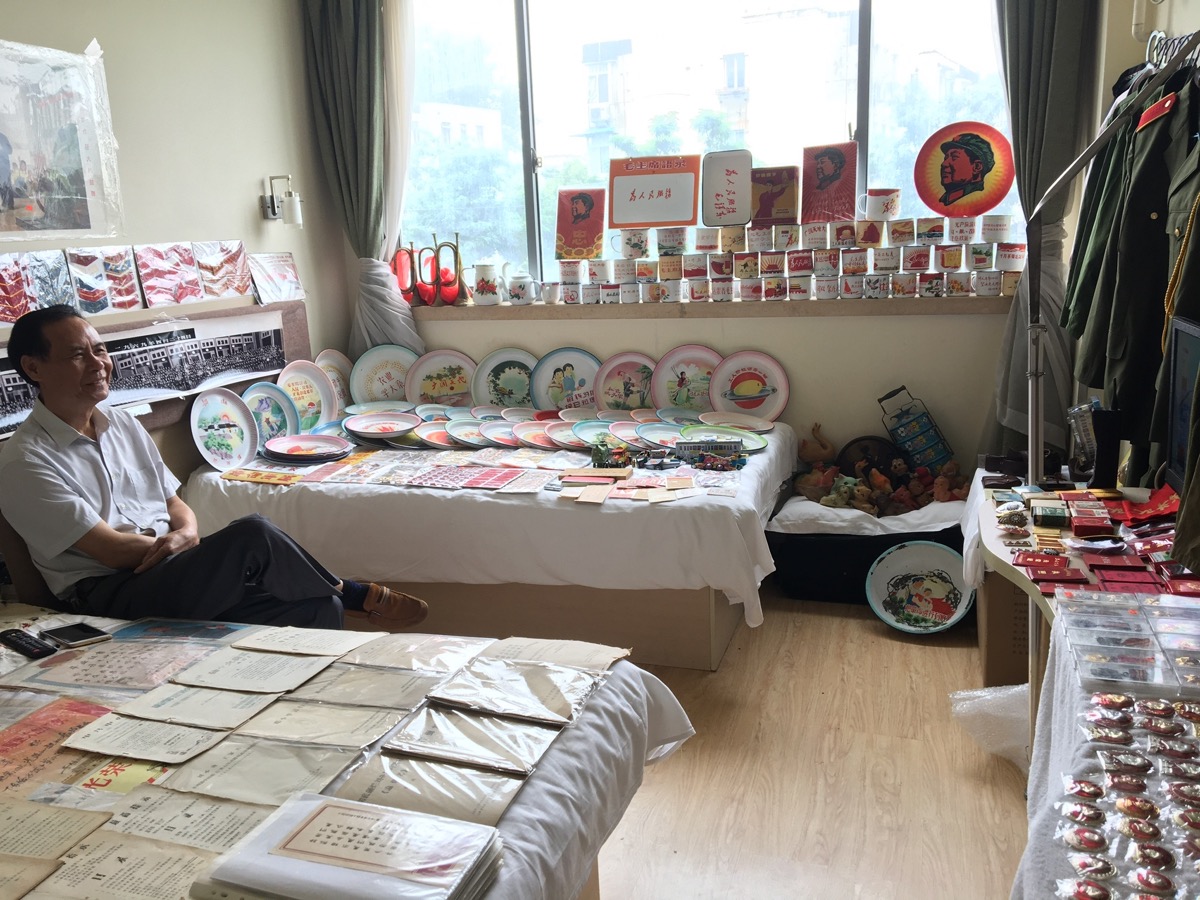
“Red collecting” is by no means a new field in China. Collecting Mao badges started during the Cultural Revolution, and became so popular that the government decided to stamp out badge markets for fear that they would encourage capitalistic thinking.
In its current form, however, red collecting began in the late 1980s and 1990s, after enough time had passed since the Cultural Revolution for nostalgia to set in, and with the emergence of dissatisfaction at the inequalities resulting from reform and opening — and when incomes had risen enough to facilitate collecting habits. Thus, the paradox inherent in red collecting has been there from the beginning: it is often a way of expressing appreciation for Mao and reservations about the direction that post-Mao China has moved, but it is catalyzed by the very force these collectors often resent — a market economy and consumerist mentality.
The limited existing English-language literature on the field of red collectors tends to paint them as either obsessed neo-Maoists or cold-hearted economic realists, in it only for the money. Both of these types exist, but in reality, collectors’ motivations are multifaceted, overlapping, and even contradictory. They might collect out of a love for Chairman Mao, a nostalgic desire to remember their youth, or a sense that the country’s history risks being forgotten in its rush toward the future. Some see these red relics as representing a rapidly disappearing moral system, while others see a good investment. While most collectors hold positive impressions of China’s “red era,” a small number of them acquire artifacts with the hope of reminding future generations of the mistakes of the past, particularly during the Cultural Revolution, in an attempt to prevent them from happening again. Some collect for the prestige that it brings them at events like the Shanghai conference, while others are more concerned with preserving objects for prosperity. Some are deeply involved with the numerous local collecting associations and spend much of their time attending exchange meetings, while others see their work as primarily a solitary pursuit.
Ji Yucheng 纪玉成, the chairman of the first official national red collecting association — the China Collectors Association Red Collections Committee 中国收藏家协会红色收藏委员会 — has estimated that there are some one million collectors (serious or hobbyist) in China. To understand this ever-expanding field, we must start by recognizing its diversity. Collectors come from all parts of the country, from areas urban and rural, from backgrounds rich and poor; they are a motley bunch spurred on by a shared interest in a particular type of visual culture.
For example, one guest at the Shanghai event, Hebei collector Niu Shuangyue 牛双跃, is motivated by what he sees as his responsibility to perpetuate the spirit of “red culture.” “Red culture and history is the spirit and soul of how the CCP led the Chinese people to victory and rejuvenation,” he tells me.
Most of his objects are related to the revolutionary opera, ballet, and film The White-Haired Girl 白毛女; some of his 15,000-plus objects are on display in his personal museum — including film posters and stills, textiles, ceramics, even food packaging — depicting the wartime story of peasant woman Xi’er, who, helped by the People’s Liberation Army, fights back against abusive landlords and the invading Japanese army.
Niu comes from a poor peasant family and grew up hearing the story of the liberation of Shijiazhuang from his father. “From a young age, I received a red education, and since The White-Haired Girl is the pride of my home province, Hebei, it made sense to me to focus my collection on it,” he says.
Niu opened his museum, with support from the local government, with the hopes of spreading the heroic and socially conscientious mentality inherent in The White-Haired Girl to the next generation. He suggests that this is the greatest contribution a collector can make. For him, collecting is partially about reconnecting with his childhood, but also about ensuring the lessons he learned from red-era stories are passed down to the next generation, many of whom have little interest in their country’s revolutionary past.
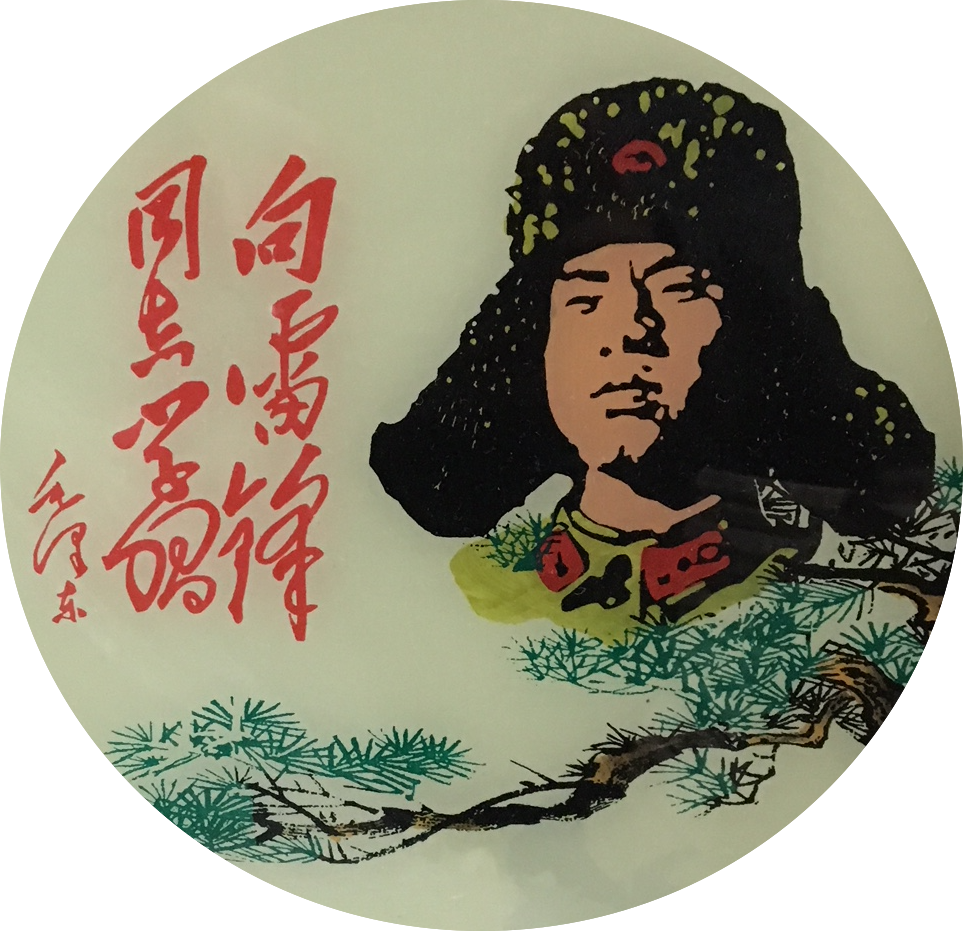
Many see their memorabilia not just as passive possessions, but an active pursuit to right historical wrongs and shape contemporary society. ![]()

The field is diverse, but not in every respect. Perhaps most immediately obvious, the field is overwhelmingly male. Women sellers tend to be part of husband-and-wife teams such as Xiao Li’s, and there are few women collectors. Wives might accompany their collector husbands to these events, but often with an air of resignation. “If you can’t change them, join them,” one woman told me.
Collectors tend to be middle-aged, usually born during the Mao era itself, though many would have only experienced it as children; they are usually very open about both the good and the bad of this period, though their causal explanations are often at odds with accepted historical understanding. It often seems, for example, that successes during Mao’s time were the result of the great man’s genius, but setbacks and disasters were the failures of collective leadership.
Most collectors have been at it for between 10 and 20 years, own thousands of objects, and are keenly aware of how their collection compares to that of their peers. As a result, collections have become increasingly specialized and niche over the past decade, as collectors look for ways to distinguish themselves amongst the sea of Mao badges and propaganda posters. This is a field that encourages communication and mutual respect, but there is no doubt that it is also deeply hierarchical, and having a unique angle or a particularly strong collection gets you recognition and status that is hard to attain in a broader social environment that mostly recognizes money and power.
When Wu Junlong 吴俊龙, a Nantong-based salesman and collector, began collecting notebooks and exercise books some 15 years ago, he could get them for pennies, or even for free, because the emphasis was on flashier objects like posters and badges. He currently has more than 10,000 unique items. In recent years, however, Wu notes that the field has changed. “A country has to have a certain level of prosperity for collecting to become feasible for larger numbers of people, in order for them to have both the resources and the leisure time,” he says. “However, as the field grows, it also pluralizes.”
As the field has matured, and more collectors have become interested in researching the history of the Mao era, the sorts of daily life and personal documents Wu has long specialized in are becoming more highly sought after. He has on display in his mini-store at the Shanghai event a number of recent acquisitions, including a 1951 notebook from the “Three-Anti” (三反 sān fǎn) campaign that targeted corruption, waste, and bureaucracy. The cover depicts a young cadre deeply immersed in writing, while inside is the self-criticism of an individual composed in conjunction with the campaign. This sort of alignment of imagery and content is, for collectors like Wu, a rare find, and one that is able to help us understand how these campaigns influenced people on a personal level. He hopes to exhibit it next year as part of an event marking the 70th anniversary of the founding of the People’s Republic of China.
While collectors hail from all parts of the country, they are not necessarily evenly distributed. Indeed, many collectors, especially those who focus on the Republican period, concentrate on the history of their local area. As a result, northern China, where much of the fighting against the Japanese took place and where many of the Communist bases were located, is also considered a stronghold for red collectors. Individuals who live in or near the territory of the wartime Shaan-Gan-Ning Border Region 陕甘宁边区, and particularly its capital Yan’an, tend to focus on the role this remote area played in the CCP’s rise; individuals in Shandong, particularly around the famous battle site of Tai’erzhuang 台儿庄, are more likely to focus on the anti-Japanese war. For example, Yang Yiping 杨义平, from Zaozhuang, Shandong, believes that Japan has never properly atoned for the atrocities it committed in China, and so he sees his collection of Japanese publications and anti-Japanese Chinese publications as “evidence” of Japanese crimes.
We might think of these regional collectors as akin to the local history buffs who exist in all parts of the world, individuals who have taken it upon themselves to preserve a more grassroots history. Regional identities are often deeply felt in China, and for individuals who sense their area’s contribution to the nation’s revival is at danger of being overlooked or forgotten, collecting and organizing exhibitions and events is considered a contribution to their area’s cultural sphere and the preservation of historical memory.
As Yang’s collection suggests, many see their memorabilia not just as passive possessions, but an active pursuit to right historical wrongs and shape contemporary society.
Hu Qiwen 胡启文, the vice secretary of the Chinese Red Research Association Red Collectors Professionals’ Committee — and the main organizer of the Shanghai event — collects, sells, and researches red documents, with a particular interest in Shanghai. In 2017, Hu established the Shanghai Municipal Collection Society Qiwen Workroom 上海市收藏协会启文工作室 in Shanghai’s Juqi Antiques market, where he holds weekly “salons” or discussion groups for those interested in book history.
“It’s a place where friends can come to exchange views, to do research, and to make plans,” he says of the Qiwen Workroom. “It’s a platform for further spreading [red] culture.”
The question of what sort of research is being carried out deserves to be asked. Hu argues that one goal is to firmly establish, in the minds of every individual, the role the Chinese Communist Party has played in China’s rise to prosperity and strength, and within that, to emphasize the importance of red culture in shaping the spirit of new China.
The agency of objects, then, needs to be understood in terms of the limits to what can be said and done in contemporary China. If collectors are not all defenders of the status quo, they are certainly not out to radically rewrite the Chinese history books in the way Westerners might think necessary. Still, the different motivations and actions of collectors speaks to the fact that the memory of the “red era” remains in flux. In a China that is now increasingly keen to project its strength, who gets to claim credit for its rise to power? And for collectors, collecting associations, and indeed China’s leaders, a key question remains: how can one make the next generation understand the causal relationship between the relics of the revolutionary period and China’s current prosperity, when they seem so aesthetically and ideologically divergent?
“The purpose of organizing these events is to keep reminding people that our lives today have not come easily,” Hu says. “They have come from the leadership of Mao Zedong and the Communist Party, and from many people’s hard work. Today’s success contains within it this culture and history.”
Many of the more than 100 museums and exhibition halls that have opened around the country have a similar purpose. Whether they will be able to attract the younger generation, however, remains uncertain.
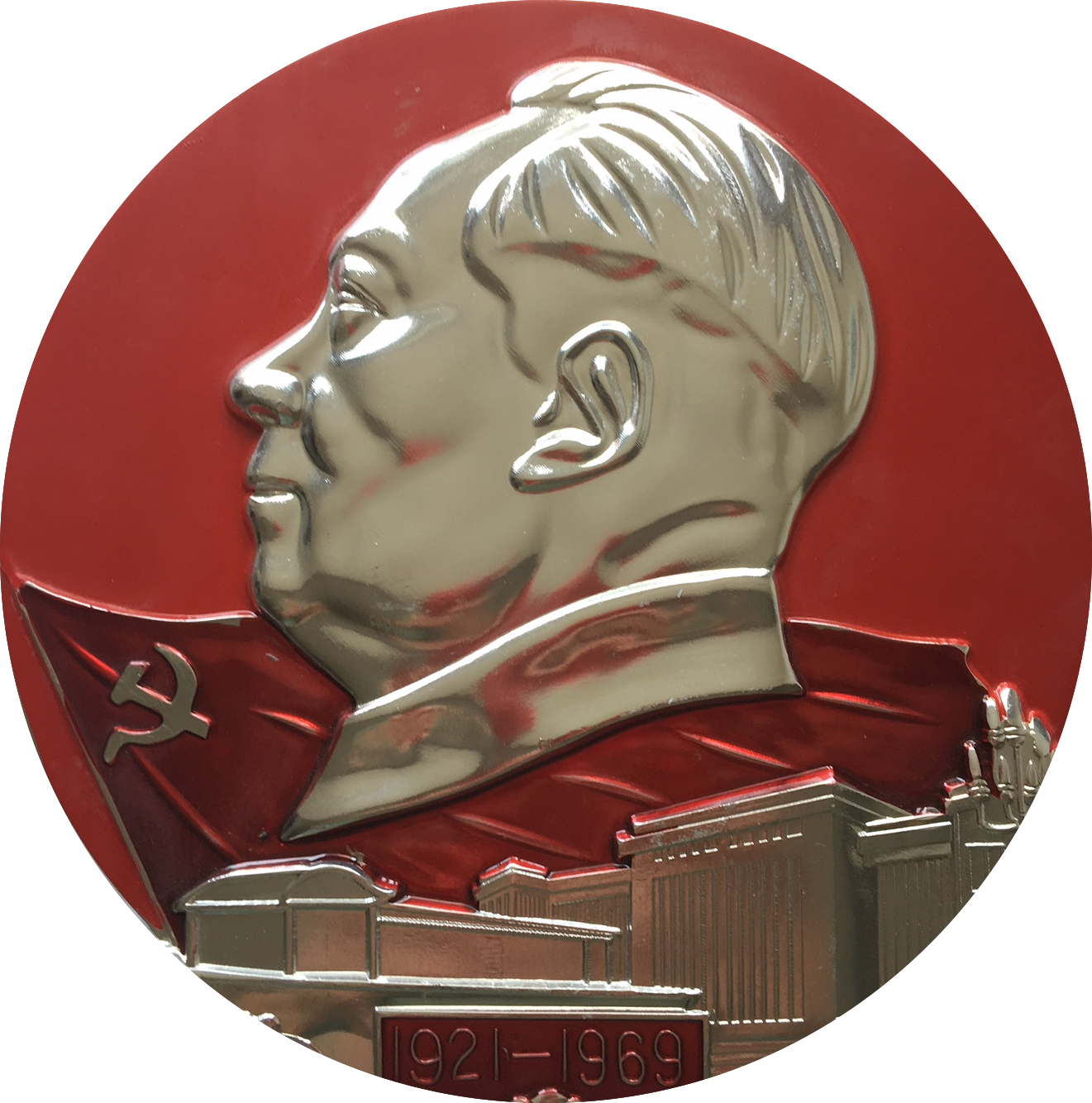
Red collectors worry about the direction their country is headed, and particularly about the perceived moral collapse at the center of society that has beget corruption and inequality.
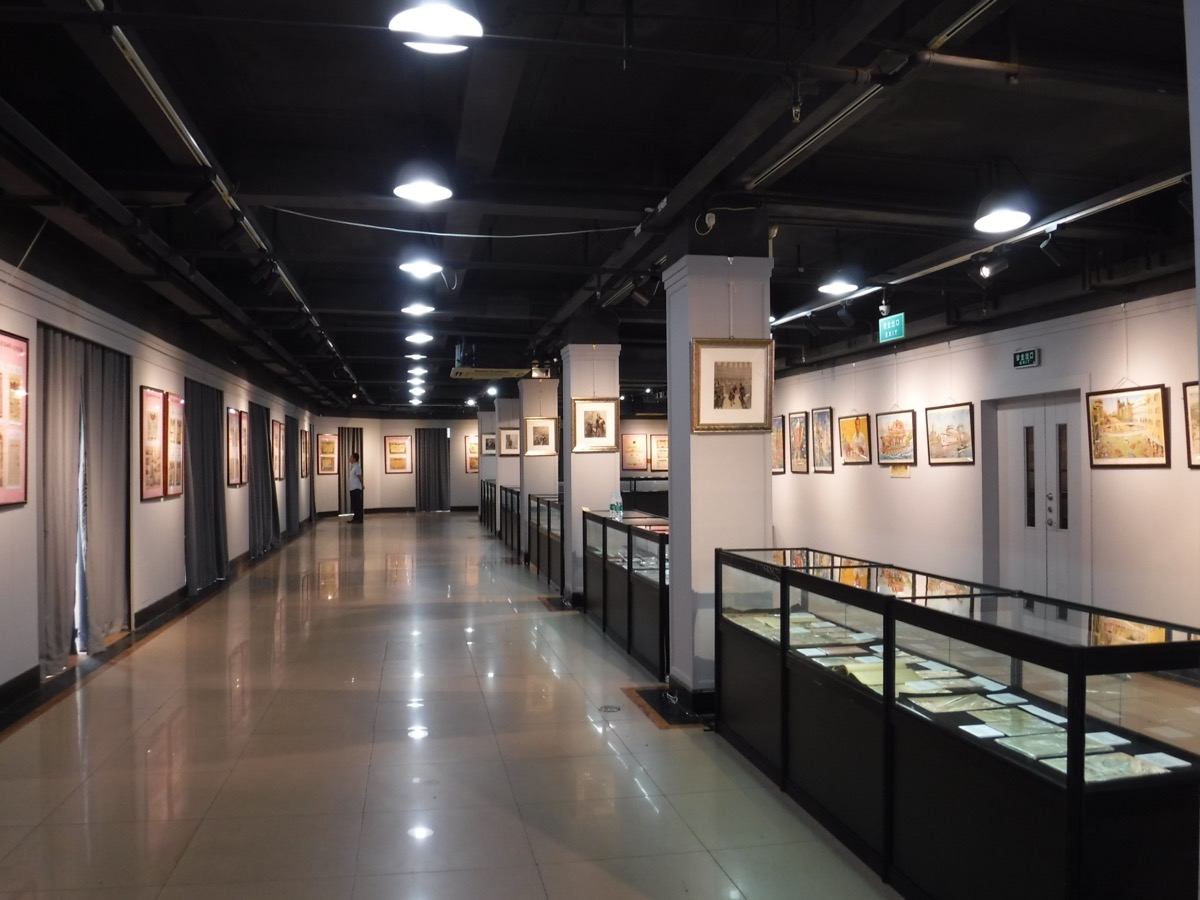
The Shanghai Red Collectors Conference concluded on May 31 with more than 200 collectors, sellers, and interested onlookers gathered at the Shanghai Workers’ Cultural Palace, near East Nanjing Road, to celebrate the launch of a Red Research Center in Shanghai. There were speeches by association chairperson Qin Lisheng 秦利生 and other dignitaries, an autograph section where attendees could get books signed by well-known Shanghai-style lianhuanhua 连环画 (a type of comic book) artists, a discussion between academics and collectors on red heritage and collecting, and, of course — the key to any good event — a group photo and an evening banquet, heavy with baijiu.
At the banquet, I chat with a man aiming to catalogue every lianhuanhua produced during the Republican period (1912-1949). So far he has details of more than 20,000 and is gathering more all the time. At the tables around us, as more booze is consumed, declarations of friendship and cooperation are interspersed with disagreements about politics, history, and current affairs — and general approval of the business acumen of Donald Trump.
The Shanghai Workers’ Cultural Palace also hosted an exhibition celebrating “Red Shanghai,” filled with more than 500 objects lent by local collectors. The cosmopolitan and commercial Shanghai of 2018 might not strike the casual viewer as the “reddest” of cities, but it was the birthplace of the Chinese Communist Party in 1921 — when the first National Congress was held in the city’s French Concession — as well as an important center for the labor movement and leftist intellectual thought in the pre-liberation period. As China’s largest city, it remained a key site for the experimentation and implementation of government policy through the Mao years, which continued through the reform period (as the swift development of Pudong illustrates).
Objects representing this history on display included early film periodicals and books issued by revolutionary and underground publishing houses, propaganda posters celebrating the liberation of Shanghai in May 1949, model laborer medals from the Mao era, and even the very first company stock issued in Shanghai in 1984. Owners of these artifacts stood close at hand, happy to explain their significance. Cai Qingsheng 蔡清生, a notebook collector, pointed out to me his set of three notebooks depicting the Shanghai Workers’ Cultural Palace, the very building we were in. “Can you believe they don’t have their own copies of these notebooks?” he asked, incredulous. “Only I have them.”
The exhibition painted an unapologetically positive picture of Shanghai’s rise and the key role the CCP played in this. Seen this way, the field of red collecting may appear to be little other than a grassroots arm of the Party’s propaganda department. Indeed, the Chinese Red Culture Research Association, which organized the exhibition, has official approval from the CCP’s National Publicity Bureau 中共宣传部, and is managed under the Chinese Academy of Social Sciences. But the impulse to collect on an individual level needs to be separated from the higher-level politicking so that we can think about what the phenomenon tells us about historical memory and social change in China today.
Reflecting the anxieties that are apparent in other parts of Chinese society, many red collectors worry about the direction their country is headed, and particularly about the perceived moral collapse at the center of society that has beget corruption and inequality. While the CCP is celebrated for the role it has played in China’s rise, many collectors worry about the loss of the “red spirit” that they remember as characterizing their youth, and so look to the objects of the era as a way of recovering it. In this way, these red relics serve a dual purpose: they are a means of imparting this “red spirit” to the next generation, and they represent a rejoinder to the spiritual vacuum of present-day China. Indeed, for many, the community spirit of the collecting world seems to be a way to withstand the anomie of contemporary society; it is a place where shared interests facilitate social bonds, where behavior that outsiders might perceive as extreme will get you recognition and status, and where, of course, everyone loves Chairman Mao.
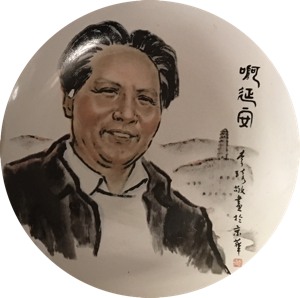
“The objects made during the Cultural Revolution came from people’s hearts; nowadays people can make good quality fakes, but they can’t fake the emotion attached to the original objects.” —Saleswoman Xiao Li
In the lead-up to the Shanghai Workers’ Cultural Palace event, business was brisk at the hotel-cum-market. As soon as it finished, however, sellers packed up and hurried on to the next event — one in Xi’an.
Xiao Li 小李, the Anhui saleswoman, tells me that she and her husband often spend 20 days a month on the road, attending events. “It’s tiring, of course, but whose work isn’t tiring?” she says. “In any case, I do it because I worship Mao, and because I enjoy it, so it’s worth it.”
Xiao Li usually has a Mao badge pinned to her clothes; she says wearing one keeps her heart at peace. But it is only natural to have an affinity for the things that remind you of your youth, she says, particularly when it’s the colorful, attention-grabbing objects of the Cultural Revolution. She thinks this is one major reason why red relics are such a popular collectable in contemporary China.
It’s also possible that by wearing the badge, she is performing a bit of shrewd marketing for her business, displaying but one example of a far wider collection. We leave this possibility unsaid.

